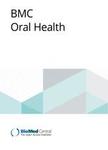版权所有:内蒙古大学图书馆 技术提供:维普资讯• 智图
内蒙古自治区呼和浩特市赛罕区大学西街235号 邮编: 010021

作者机构:Institute of Physical Engineering Technical University Brno 616 69 Brno Technická 2 Czech Republic Department of Physics University of Wales Swansea Swansea SA2 8PP Singleton Park United Kingdom Department of Chemistry University of Edinburgh Edinburgh EH9 3JJ West Main Roads United Kingdom
出 版 物:《BMC Oral Health》 (BMC Oral Health)
年 卷 期:2001年第1卷第1期
页 面:1-9页
主 题:Mahalanobis Distance Laser Induce Breakdown Spectroscopy Dental Tissue Laser Drilling Pattern Recognition Algorithm
摘 要:Background: Laser Induced Breakdown Spectroscopy (LIBS) can be used to measure trace element concentrations in solids, liquids and gases, with spatial resolution and absolute quantifaction being feasible, down to parts-per-million concentration levels. Some applications of LIBS do not necessarily require exact, quantitative measurements. These include applications in dentistry, which are of a more identify-and-sort nature - e.g. identification of teeth affected by caries. Methods: A one-fibre light delivery / collection assembly for LIBS analysis was used, which in principle lends itself for routine in vitro / in vivo applications in a dental practice. A number of evaluation algorithms for LIBS data can be used to assess the similarity of a spectrum, measured at specific sample locations, with a training set of reference spectra. Here, the description has been restricted to one pattern recognition algorithm, namely the so-called Mahalanobis Distance method. Results: The plasma created when the laser pulse ablates the sample (in vitro / in vivo), was spectrally analysed. We demonstrated that, using the Mahalanobis Distance pattern recognition algorithm, we could unambiguously determine the identity of an unknown tooth sample in real time. Based on single spectra obtained from the sample, the transition from caries-affected to healthy tooth material could be distinguished, with high spatial resolution. Conclusions: The combination of LIBS and pattern recognition algorithms provides a potentially useful tool for dentists for fast material identification problems, such as for example the precise control of the laser drilling / cleaning process.